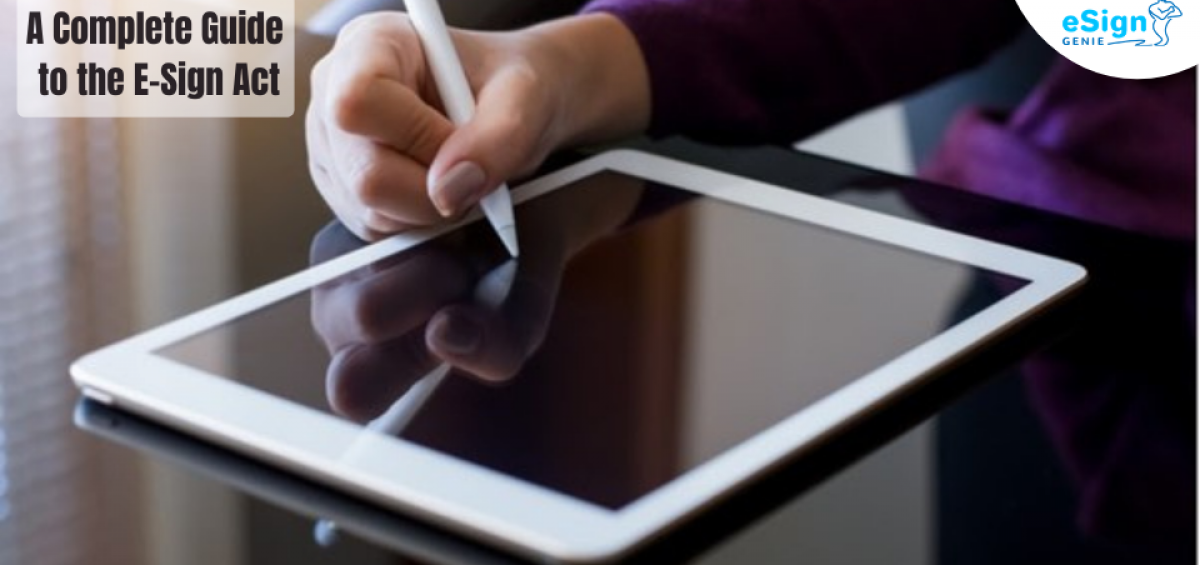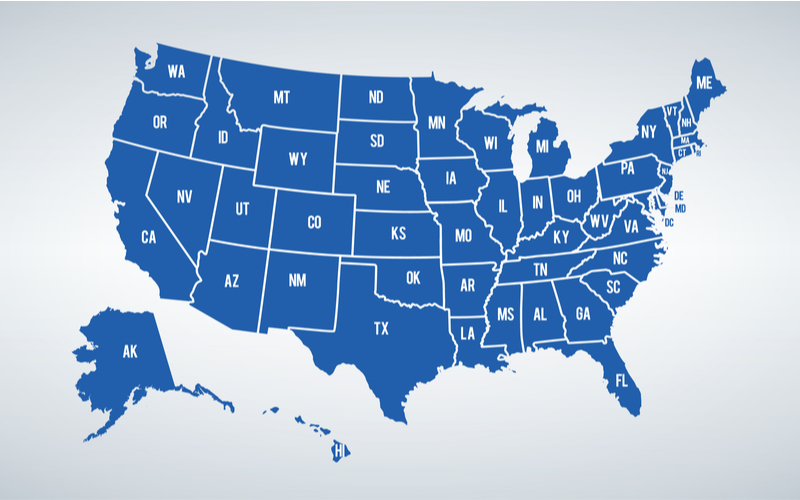Have you recently completed employee paperwork? Or submitted online taxes? If so, you’ve likely submitted e-signatures. But have you ever wondered about the validity of the eSign Act? If so, you’re not alone. Electronic signatures are assigned to important documents used in personal and everyday business transactions; therefore, their validity and legality are crucial. lectronic signatures gained legal status with the eSign law. This legislation established a process for the online ratification of documents and contracts.
The ESIGN Act has contributed to streamlining business operations. It’s also eliminated unnecessary paperwork. And it has kept business operations running smoothly despite a global pandemic.
But how do digital signatures work? And are they always legal? Let’s take a closer look at the validity of electronic signatures.
What Is the US Electronic Signature Law?
Let’s start with a simple question. What is the US Federal Electronic Signature in Global and National Commerce Act (ESIGN Act)?
This legislation was enacted to ease the adoption of e-signatures. The Act ushered in an innovative new era of document processing.
How does the ESIGN Act define an electronic signature? An e-signature refers to any electronic symbol, sound, or process logically associated with or attached to a contract or other record. This signature must be adopted or executed by a person intending to enter into an agreement.
The ESIGN Act gives electronic signatures the same legal weight as wet signatures. The Act also permits the introduction of e-signatures in a court of law as evidence. The Act states that the validity, enforceability, and effect of electronic documents may not be denied.
The Act has been in place for two decades. But many companies still don’t understand its implications.
They fail to recognize that e-signatures are about more than convenience. They hold up in a court of law.
The History of the ESIGN Act
There’s no doubt that the ESIGN Act has brought far greater convenience to our lives. If it weren’t for this law, you wouldn’t be able to open a bank account at 10 pm, submit a loan application at 2 am from the comfort of your own home, or share personal health information (PHI) with your physician while recovering at home.
What’s the history of the ESIGN Act? And how did it come into being?
The ESIGN Act has always enjoyed significant support from Congress. Yet, its number one advocate was Michigan Senator Spencer Abraham. Abraham believed the bill would empower e-commerce while eliminating security vulnerabilities.
Besides Senator Abraham, the ESIGN Act received support in the House of Representatives from Congressman Tom Bliley and Congresswoman Anna Eshoo. Like Abraham, these representatives helped solidify the legality of electronic commerce contracts.
In 1999, legislators introduced a handful of bills related to e-commerce. For the next year, these bills were reviewed, broadened, revised, and combined.
This process resulted in House Bill 1714 and Senate Bill 761. These bills shared the objectives of supporting technological neutrality while promoting e-commerce.
House Bill 1714 initially proved narrow in scope. But over time, it was broadened to include more critical provisions for safeguarding consumers.
ESIGN Act and the Validity of Electronic Signatures
On June 30, 2000, President Bill Clinton signed the ESIGN Act into law. By this time, some states had already enacted legislation regarding electronic record keeping.
But the ESIGN Act established a nationwide safety net to ensure electronic contracts. It did so not only in terms of local contracts but also interstate and global commerce relationships. The Act also grandfathered in pre-existing agreements.
These included all agreements delivered digitally before October 1, 2000. It also stipulated that agreements created after this date must comply with the guidelines outlined in the Act.
Before the ESIGN Act, companies struggled to conduct legally-binding transactions online. Many enterprises accepted digital signatures. But questions about how these signatures would hold up in court remained.
The ratification of this legislation elevated electronic signatures. They gained the same legal standing as pen-and-paper signatures.
Twenty-one years have lapsed since the ESIGN Act’s passage. Since that time, numerous court cases have upheld the legality of these signatures.
ESIGN Act: Consent and Disclosures
What else do you need to know about the ESIGN Act? It provides consumers with all necessary disclosures.
In turn, customers give consent via their signatures. What do these disclosures include?
According to the ESIGN Act, they should include a “clear and conspicuous statement.” This statement should inform consumers of their right to receive a non-electronic copy of the form. These agreements should also contain language about withdrawing consent.
That said, few companies provide customers with paper copies of signed contracts. Yet, these companies remain in compliance with the Act. How is this possible?
Remember, the Act doesn’t compel companies to provide paper records to clients unless requested. Failure to obtain consent doesn’t impact the validity of an executed document.
Nevertheless, a company should always provide consumers with information on how to access an electronic record. This information should be relevant to the software or hardware used.
What happens when a customer confirms receipt of an agreement’s electronic record? It represents confirmation that they can access and retain the electronic information.
Records of Original Documentation
Companies that issue electronic contracts must retain records of agreements. Why? To remain in compliance with legislative requirements, including satisfying HIPAA and 21-CFR Part 11 requirements.
These records also help enterprises clarify future questions. These may include questions about the legitimacy of a deal or details about its terms.
Keeping contract records is a company’s responsibility. Whether agreements are on paper or in electronic format. That’s why many businesses opt to use e-signature software.
Electronic signature software facilitates the creation and transmission of agreements. It also stores documents in secure online archives.
The software automatically satisfies regulations related to retention. It’s a win-win for companies and their customers.
Legislative guidelines stipulate that records remain accessible to all parties for a specified time. This period is regulated by the governing body or state agency with jurisdiction over the contract, transaction, or document.
Are you interested in finding out more about electronic signature technology? Check out pricing for the market’s number one e-signature software solution.
Are Electronic Signatures Legal in Every U.S. State?
When the ESIGN Act passed in 2000, it ensured that interstate commerce would not get bogged down by complicated, competing digital signature laws in the 50 states.
The Act established specific guidelines across the board. These Electronic Signature Law (5 ILC 175/1-101)could only be limited or modified by states that adopted the Uniform Electronic Transactions Act (UETA).
Subsequently, nearly every state in the Union passed the UETA. For this reason, the UETA complements the ESIGN Act.
The UETA provides a framework for establishing the validity of an e-signature for both governmental and commercial transactions. We’ll explore the implications of the UETA more fully in the next section.
In this context, some have questioned whether or not the ESIGN Act is legal in all 50 states. The short and simple answer is yes.
Why? Because the ESIGN Act is a federal law.
The ESIGN Act clarifies that states don’t have to conform to a tee with the federal law. But they must provide equal protection for electronic signatures and electronic contracts.
How Many States Have Electronic Signature Laws?
How many states have ultimately adopted the UETA? Forty-seven states have enacted some version of this legislation. So have territories and districts like Puerto Rico, the District of Columbia, and the US Virgin Islands.
What about the states that haven’t adopted the UETA? They include Illinois, Washington, and New York. That said, each of these states has enacted legislation impacting electronic transactions and e-signatures.
For example, Illinois has the Electronic Signature Law. And New York has created the Electronic Signatures and Records Act (ESRA).
How do these laws compare to the ESIGN Act and the UETA? Let’s take a closer look.
The Illinois Electronic Signature Law (5 ILC 175/1-101) was enacted in 1999. Unlike the ESIGN Act and the UETA, Illinois’s law distinguishes between the security of different types of e-signatures.
What does it take for an e-signature to be considered secure in Illinois? Both parties must agree on the secure nature of the signatures and both parties must use these signatures in verifiable ways. The signatures must also be created in a manner seen as commercially reasonable. Finally, these signatures must be perceived by all parties as good-faith actions.
What about New York’s law? The Electronic Signatures and Records Act (ESRA) states that e-signatures are as legally binding as wet signatures. The ESRA also includes a list of best practices guiding online transactions.
No matter your geographic location, it makes sense to have e-signature software to help you navigate the intricacies of legislation. Explore one of the most trusted solutions.
Are There Any Exceptions to the ESIGN Act?
What’s one of the best advantages of the ESIGN Act? The comprehensive nature of the legislation. However, there are still many exceptions to the Act’s rules.
Which records and documents don’t fall under the protections of the ESIGN Act? They include:
- Adoption paperwork
- Divorce decrees
- Wills, trusts, and codicilsCourt notices and orders
- Certain areas of the Uniform Commercial Code
- Official court documents, including pleadings and briefs
- Notices of default, repossession, eviction, and foreclosure
- Notices of the termination of utility services
- The cancellation of insurance benefits
- Documentation accompanying hazardous material transportation
- Product notices of material failures or recalls
Besides the situations listed above, you should also understand how the ESIGN Act relates to international commerce.
The ESIGN Act and International Commerce
How does the validity of electronic signatures hold up when it comes to international commerce? You should know that lawmakers pushed the ESIGN Act for many different reasons, including a desire to make sure American companies didn’t fall behind on the global business front.
For this reason, the ESIGN Act promotes a reliance on e-signatures in international business transactions. What does it take for documents with electronic signatures to be valid? All parties involved must have access to preferred authentication technologies.
This access offers parties the legal recourse to prove the validity of a transaction in court. When it’s all said and done, the ESIGN Act applies to the most commonly used types of business and governmental documents.
Similarly, the ESIGN Act also works hand-in-hand with the Uniform Electronic Transaction Act (UETA). While both acts are similar and legal within the same states mentioned above, the UETA focuses primarily on business and commercial contracts.
COVID-19 and E-Signatures
The COVID-19 pandemic has made the eSign law and e-signatures more critical than ever before. After all, many businesses remained closed due to the virus. Savvy ones learned how to employ a remote workforce and run various aspects of their businesses online.
Fortunately, e-signature technology has facilitated the ability of companies to continue doing business despite social distancing requirements. Being able to assent to a contract via email has proven highly valuable in the current climate. Many companies have come to rely on it.
It’s safe to say that COVID-19’s “new normal” has accelerated the use of e-signatures. This fact proves true throughout the United States and in every area of life. From healthcare to investment and much more.
For example, the Federal Reserve Bank in New York recently announced they now accept e-signatures for specific documents.
Like remote work, we can assume that increased reliance on electronic signatures will persist. Even after the country reopens and returns to a semblance of normalcy.
The Legally Binding Nature of E-Signatures
Electronic signature laws, such as the ESIGN Act and the UETA, have streamlined many aspects of business and governmental processes. Especially in the age of COVID-19. Social distancing and quarantines have impacted nearly every aspect of business and governmental life, rendering e-signings essential.
To take full advantage of the rights protected by the ESIGN Act and legislation like the UETA, use legally binding, electronic signature software. This software will assist you in preparing and gathering vital signed documents.
Ready to learn more? Check out Foxit eSign to gain access to easily integrated software that’s HIPAA compliant and comes with intuitive, premade document templates.















